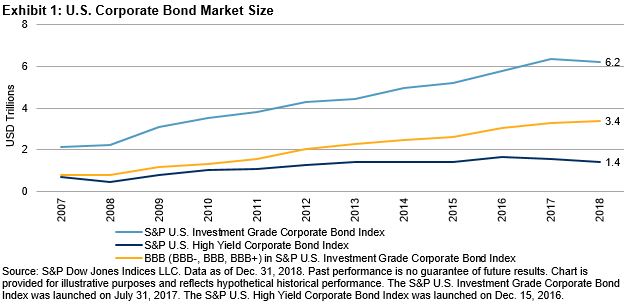Passive use of factor strategies began with growth and value style investing. S&P Dow Jones Indices now offers single- and multi-factor indices that provide exposure to growth, quality, value, momentum, size, yield, and low volatility factors.
Factors perform differently depending on market conditions, economic cycles, or investor sentiment. Timing factors can be difficult. Many market participants combine factors as a possible way to achieve portfolio diversification.
There are different ways to form multi-factor portfolios,[1] and in a relatively small market like the Mexican equity market, it can be challenging. To meet this challenge, we constructed the S&P/BMV IPC Quality, Value & Growth Index with a two-step process of constituent selection and weighting.[2] A bottom-up integration approach is used in order to increase overall exposure to the desired factors.[3]
The underlying universe is the S&P/BMV IPC, which is widely considered as the barometer of the Mexican equity market. Because this benchmark already incorporates liquidity measures, there’s no need for additional liquidity criteria when applying factor overlays.[4]

- Step One – Constituent Selection: We calculate the quality, value, and growth z-scores for each of the eligible stocks in the universe. A security must have at least one fundamental z-score for each factor (quality, value, and growth) to be included in the index. A stock is ineligible if any of the factor scores are among the four lowest-ranked securities by factor.
- Step Two – Weighting Mechanism: At each rebalancing date, all securities eligible for inclusion are weighted by their final multi-factor score weight, which is the simple average of the underlying quality, value, and growth scores.
The number of constituents in the S&P/BMV IPC Quality, Value & Growth Index varies. On average, it has had roughly 24 constituents from June 17, 2005,[5] to Dec. 21, 2018, while its benchmark, the S&P/BMV IPC, has had 35.
Due to the weighting mechanism, we find that the multi-factor index differs meaningfully from the underlying benchmark. The active share, calculated by taking the sum of the absolute value of the differences of the weight of the S&P/BMV IPC Quality, Value & Growth Index and the weight of each holding in the S&P/BMV IPC divided by two, was greater than 50% (see Exhibit 2).

Exhibit 3 compares the fundamental characteristics of the multi-factor strategy to the benchmark. On average, the multi-factor strategy had more desirable quality characteristics, with lower financial leverage and accruals ratios, as well as higher operating return on assets. It also had higher value characteristics than the benchmark.
Despite having fewer securities, multi-factor strategies are possible in Mexico. The requirement is that there are sufficient fundamental or valuation differences among the constituents.

[1] Innes, Andrew, S&P Dow Jones Indices, “The Merits and Methods of Multi-Factor Investing,” 2018.
[2] For further information, see the S&P/BMV IPC Quality, Value & Growth Index section in the S&P/BMV Indices Methodology.
[3] Sanchez, Maria, S&P Dow Jones Indices, “Blending Factors in Mexico: The S&P/BMV Quality, Value and Growth Index,” 2019.
[4] For further information, see the S&P/BMV IPC section in the S&P/BMV Indices Methodology.
[5] The first value date of the S&P/BMV IPC Quality, Value & Growth Index is June 17, 2005. For more information, please see our website at https://spindices.com/indices/strategy/sp-bmv-ipc-quality-value-growth-index.
The posts on this blog are opinions, not advice. Please read our Disclaimers.



















































